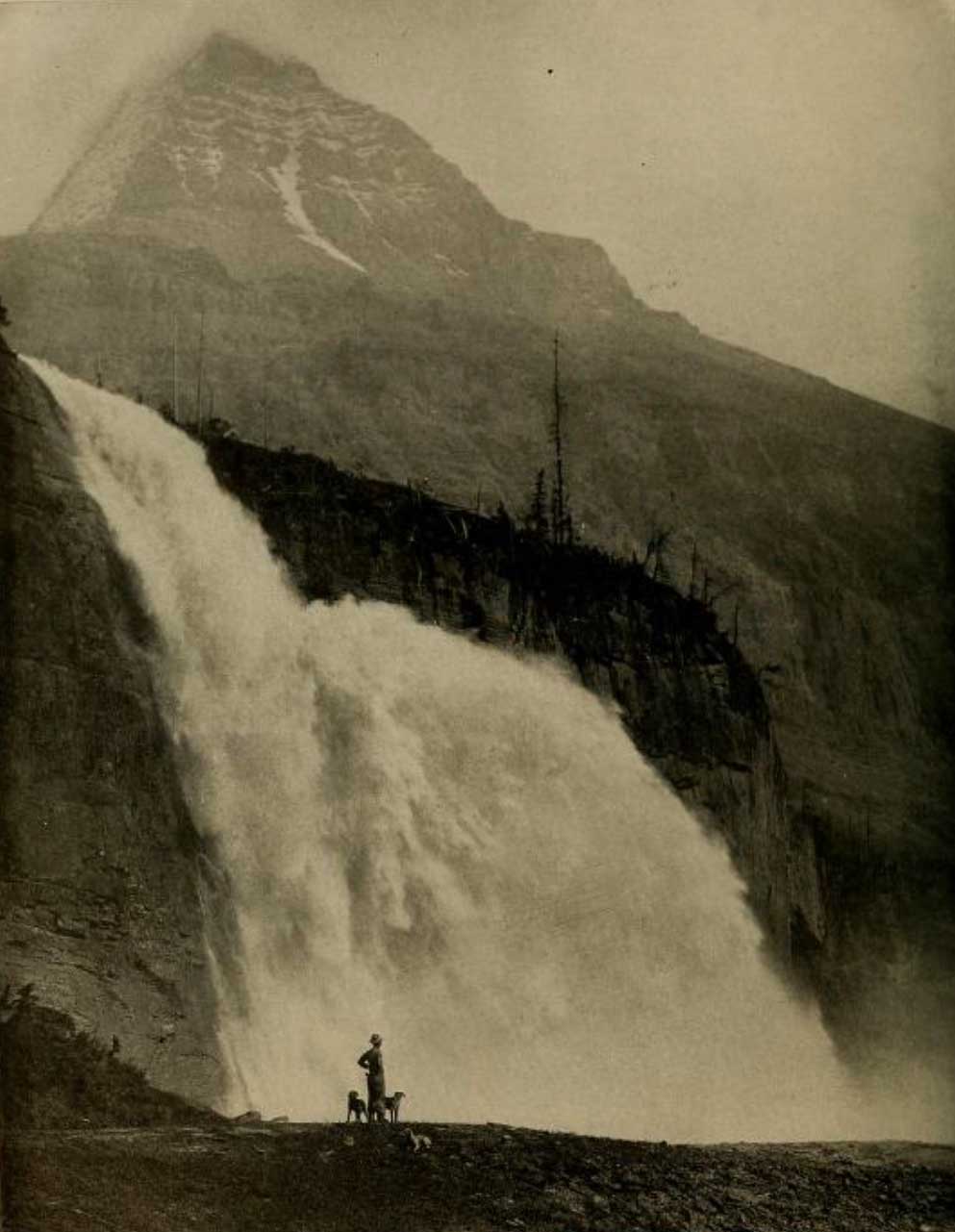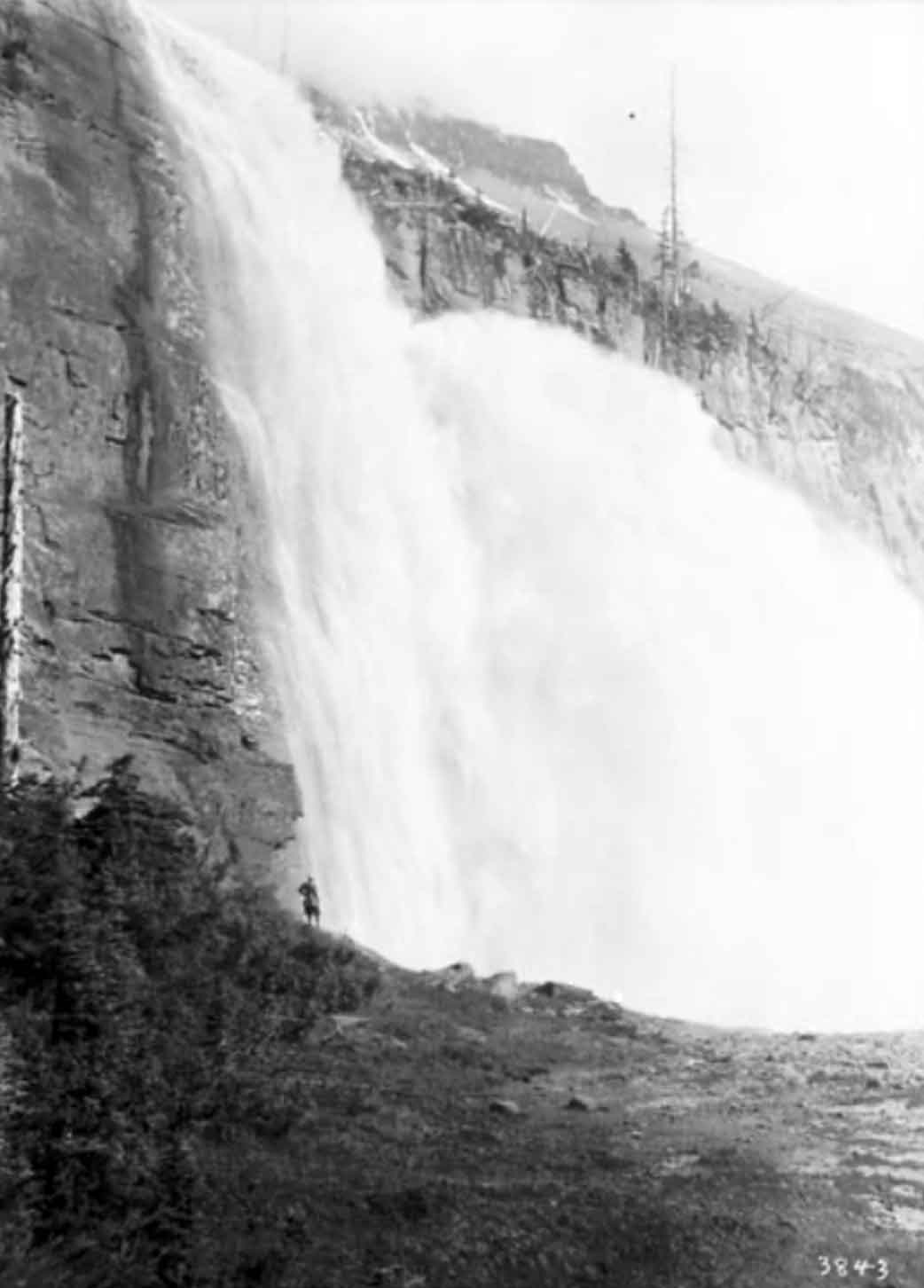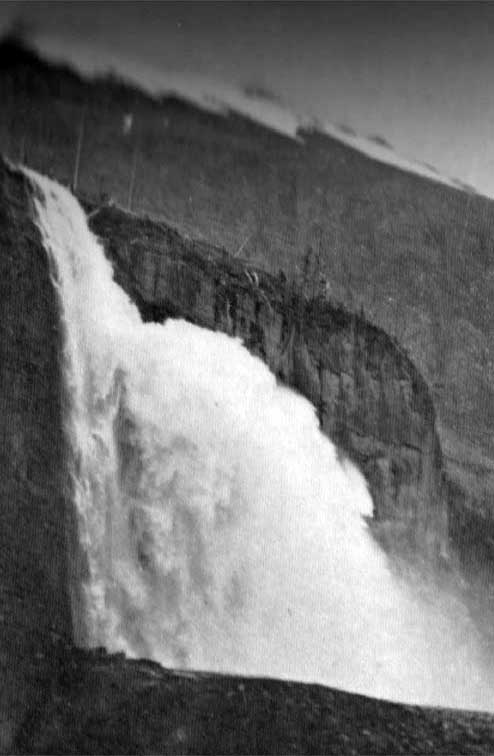Robson River, SW of Berg Lake, NW of Mount Robson
53.1333 N 119.2 W — Map 83E/3 — Google — GeoHack
Earliest known reference to this name is 1911 (Wheeler)
Name officially adopted in 1951
Official in BC – Canada
Wheeler’s map Mount Robson 1912
Boundary Commission Sheet 32 (surveyed in 1922 &1924)

Emperor Falls, with Robson Peak above. Photo by R. C. W. Lett, courtesy of Grand Trunk Pacific Railway, 1913
National Geographic Magazine 1913

Emperor Falls
William James Topley, 1914
Library and Archives Canada
The 1911 Alpine Club of Canada–Smithsonian Robson Expedition was led by Arthur Oliver Wheeler [1860–1945]. He wrote:
Below Berg Lake the Robson River enters a narrow rock canyon, and soon becomes a cascade, careening wildly down its bed and showing a great swirl of white water. Then comes a line of cliffs extending part way across the valley. Over this the river makes a grand and spectacular leap to a rock floor below, where it turns sharply to the left and pours madly though an extremely narrow box canyon which it has carved in the bed rock. The fall is magnificent and I know of no other of quite the same type. The total drop in 145 feet by aneroid barometer measurement. At a distance of 60 feet from the crest, the full volume of the water strikes a ledge and bounds outwards for 30 feet, creating a splendid rocket which gives the idea of a giant leap. There is such a feeling of majesty and power inspired by the spectacle that I christened it “The Emperor Falls.”
- Wheeler, Arthur Oliver [1860–1945]. “The Mountains of the Yellowhead Pass.” Alpine Journal, Vol. 26, No.198 (1912):382
- Wheeler, Arthur Oliver [1860–1945]. “The Alpine Club of Canada’s expedition to Jasper Park, Yellowhead Pass and Mount Robson region, 1911.” Canadian Alpine Journal, Vol. 4 (1912):9-80
- Walcott, Charles Doolittle [1850–1927]. “The monarch of the Canadian Rockies.” National Geographic Magazine, (1913):626. Internet Archive
